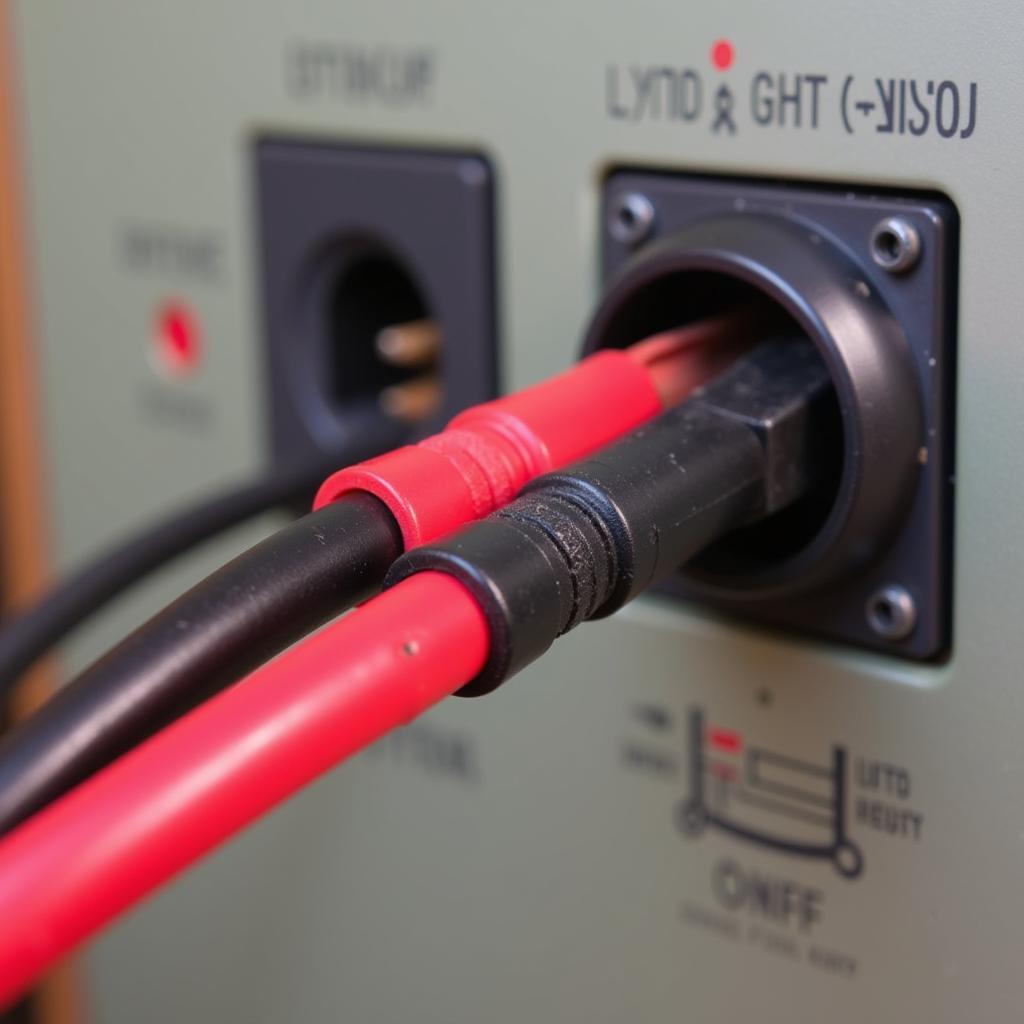Understanding the color codes for positive and negative wires is crucial for any electrical work, ensuring safety and proper functionality. Whether you’re installing a new light fixture, repairing an appliance, or working on a complex wiring project, knowing which wire is which is paramount. This guide will delve into the world of wire color codes, providing you with the essential knowledge to navigate electrical wiring safely and effectively. what colors are positive and negative wires rgb lights
Decoding the Mystery of Wire Colors
Wire colors aren’t random; they follow specific conventions to simplify identification. However, these conventions can vary depending on the application, region, and even the age of the wiring. While there are general guidelines, always double-check with local regulations and the specific device’s instructions.
Standard Wire Colors in Household Wiring
In most residential settings, you’ll encounter these standard wire colors:
-
Black: Typically used for the hot wire, carrying the electrical current.
-
Red: Often used for a second hot wire in 220V circuits or as a switch leg.
-
White (or Gray): Designated as the neutral wire, completing the circuit and returning the current.
-
Bare Copper or Green: Represents the ground wire, providing a safety path for excess current to prevent shocks.
It’s essential to remember these are guidelines. Older homes might have different color schemes, and some appliances use different conventions altogether. Always test wires with a voltage tester to confirm their function.
DC Wiring: Positive and Negative
In direct current (DC) systems, the color codes differ from AC household wiring. The most common colors are:
- Red: Typically indicates the positive (+) wire.
- Black: Usually represents the negative (-) wire.
However, this isn’t a hard and fast rule. For example, in some automotive applications, black can be positive. Always consult the specific device’s documentation. what color is the c wire
Understanding Polarity in DC Circuits
Unlike AC, DC current flows in one direction. Correct polarity is crucial for many DC devices. Reversing the positive and negative wires can damage the device. Therefore, meticulous attention to wire color and polarity is vital in DC applications.
 DC Wiring Positive and Negative
DC Wiring Positive and Negative
Speaker Wire Colors: Getting the Sound Right
Speaker wires often use color-coding to differentiate positive and negative connections. Commonly, one wire will have a stripe or ridge, indicating the positive terminal.
“Incorrect speaker wire polarity can lead to phase cancellation, resulting in a weaker sound and distorted bass response,” advises John Smith, a certified audio engineer with over 20 years of experience.
Wire Colors in Other Applications
Wire color codes can vary across different applications. For instance, RGB lights, thermostats, and low-voltage systems often have their own specific color conventions. what color is the ground wire on a household circuit
“Always consult the manufacturer’s documentation for specific color codes related to the device or system you are working with,” recommends Jane Doe, a licensed electrician and electrical safety consultant. “Never rely solely on general color code guidelines.”
what color speaker wire is positive
Conclusion
Understanding what color are positive and negative wires is fundamental to safe and effective electrical work. While general color codes exist, always prioritize consulting the specific device’s instructions and local regulations. Using a voltage tester is crucial for confirming wire function and ensuring safety.
FAQ
- What if the wires in my house aren’t the standard colors?
- How can I identify the wires in an old electrical system?
- Is it safe to rely solely on wire colors?
- What should I do if I’m unsure about the wire identification?
- Are there any tools I can use to identify wires?
- What are the color codes for three-phase power systems?
- Where can I find more information about specific wire color codes?
Other Questions and Related Articles
- How to test wires with a multimeter?
- Understanding basic electrical safety practices.
- Common wiring mistakes to avoid.
- Wire gauge and its significance.
Need help with your electrical projects? Contact us!
Phone: 0373298888
Email: [email protected]
Address: 86 Cau Giay, Hanoi
Our customer service team is available 24/7.
